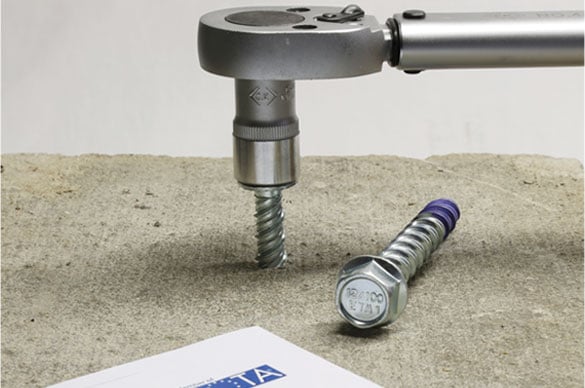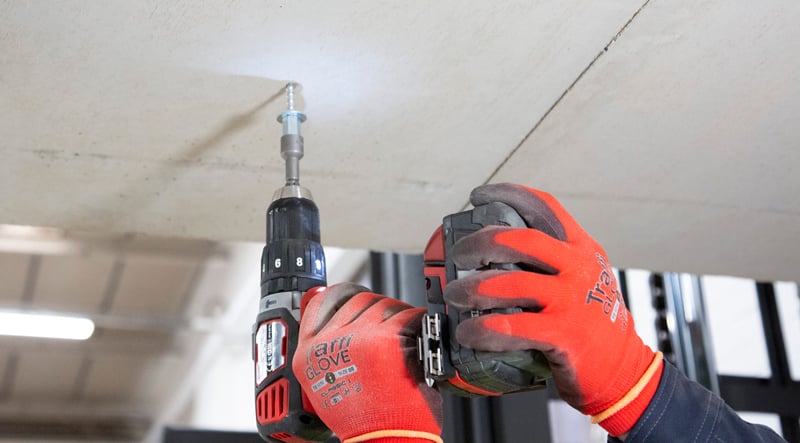One of the biggest variables for a compliant anchor/fixing installation is the installer.
Anchor installation errors are a prevailing issue within the M&E industry. As the industry moves towards a compliant, evidence-based model, it will be down to the supply chain to provide that evidence. This not only covers the performance data of anchors supplied on-site, but will also cover the evidence to show that all installers on-site are trained to carry out compliant installations.
Anchor/Fixing compliance doesn't have to be complicated, if you follow BS 8539:2012 code of practice, it will guide you through the safe selection, installation, installer training, and testing of anchors to mitigate the risk of site failures.
If you have not got time to read this article then simply download our BS 8539 Fixing Installation Guide.
It is estimated that up to 80% of all ‘drop in’ anchors are installed incorrectly, worryingly these are commonly used for overhead safety-critical applications.
As previously discussed through our Sound-Out series there are two key reasons why anchor installation failure occurs.
- Selecting the wrong anchor (the selection criteria has not been carried out)
- The installer is not capable of installing an anchor to the correct standard.
Key learning points for anchor installation compliance.
Select the correct setting tools
Selecting the incorrect setting tool for anchor installation is a common error. For wedge anchors fixed within overhead applications, using an SDS setting tool generally makes the whole installation process easier and quicker.
Tighten to the manufacturers recommended torque setting
Over-tightening concrete screws can strip the thread and cause undue stress on the substrate and under torquing a concrete screw runs the risk of the fixture moving after load relaxation. As a rule of thumb, turn the anchor by no more than ¼ turn from when the head makes contact with the fixture or substrate. When an anchor has been correctly torqued it can achieve its maximum load and that there is no damage to the anchor or substrate.
According to BS 8539 anchors should be tightened to the manufacture’s recommended torque settings.
Drill the correct sized hole
Holes drilled should be the correct diameter and depth. Using a worn drill bit results in undersized holes makes installation difficult and increasing stress in the anchor material. Make sure you inspect drill bits frequently and where possible use a PGM stamped accredited drill bit.
Removing dust & debris before installation
Cleaning holes with wire brushes and dust removal pumps or vacuum cleaners is essential to ensure the integrity of chemical anchors. During drilling, the drill bit compresses dust onto the surface of the hole. Often using a blow-out pump is not enough for dislocating dust and removing it, the resin can bond to the dust rather than the substrate. Often a combination of brush and blow-out pumps is the best method. It is also important to follow the manufacturer’s cleaning instructions to achieve the correct bond strength.
BS 8539 guidance
BS 8539 defines competent as: “suitably trained and qualified by knowledge and practical experience, and provided with the necessary instructions, to enable the required task(s) to be carried out correctly”.
Anchor/fixing compliance
There is a growing desire within the M&E sector to ensure that all supports on-site have quantifiable evidence to verify they are suited to that application. This will be reinforced with the Golden Thread legislation.
The incorporation of ‘The Golden Thread’ to the Building Safety Bill, will put confidence in the supply chain as it reduces the risk of non-compliant products being specified. This is because the onus will be on buyers to purchase products that have compliant testing evidence data to minimise the health and safety risk.
Further reading
If you are looking for advice around anchor/fixing compliance it is important that you first understand how to correctly select an anchor.
Construction Fixing Association
The construction fixing association is one of the main bodies that created BS 8539:2012 code of practice. On their website, they have a plethora of useful resources, from installation guides to technical notes on the standard.
Anchors are a small component to which little consideration is frequently given but are vital to preventing the collapse of the structure or installation that depends on them. With the right training, you can reduce the risk of anchor installation errors.
Start the conversation around anchor/fixing compliance.
0115 922 1585
Speak to our technical experts via live chat




